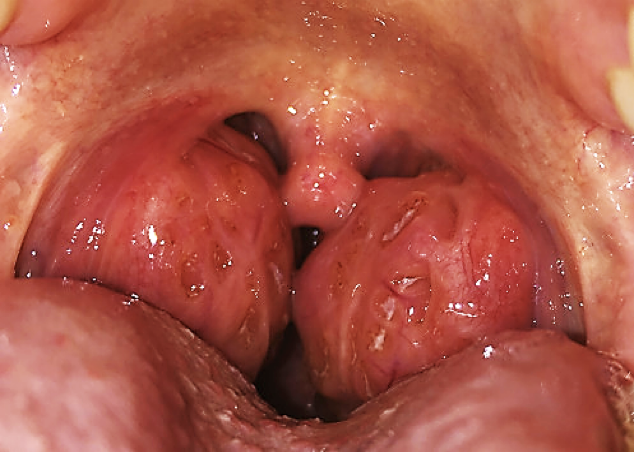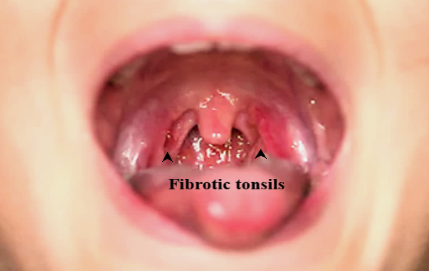

Infection of the tonsils is one of the most common pathology in the oral cavity. Depending on the time period and recurrence of the infection, tonsillitis is divided into
I. Acute Tonsillitis:
It is an acute infection of the tonsils often accompanied by fever, malaise and sore throat.
Most common organism hemolytic streptococcus, haemophilis and anaerobic organism. Viruses such as influenza, para influenza, adenoviruses and rhinoviruses also infect the tonsils.

Acute follicular tonsillitis.

Acute parenchymatous tonsillitis
1. Throat pain is acute, especially on swallowing.
2. High grade fever, malaise with tachycardia.
3. Enlarged and tender jugulodigastric lymph nodes.
4. Voice may be changed due to accumulation of saliva.
5. Referred pain to the ear via the glossopharyngeal nerve.

Acute membranous tonsillitis

II. Chronic Tonsillitis:
Chronic tonsillitis is caused by recurrent attacks of acute tonsillitis.

1. Ingestion of cold or infected food stuff.
2. Low immunity and resistance.
3. Upper respiratory tract infection.
4. Pollution and ill-ventilated environment.
5. Close contact with infected persons.
6. Residual tonsillar tissue left post-tonsillectomy.
1. Nutritious and high protein diet.
2. Treatment of coexistent infection of teeth, nose and sinuses.
3. Antibiotics, analgesics, antiseptic gargles
4. Tonsillectomy should be done when tonsils interfere with speech, deglutition and respiration or cause recurrent attacks.
1. Tonsils are hypertrophied and fibrotic.
2. On pressing the tonsil, cheesy material can be seen.
3. Enlarged, nontender, jugulodigastric lymph nodes.
1. Recurrent throat pain, fever.
2. Recurrent upper respiratory tract infection.
3. Enlarged Cervical lymph nodes.